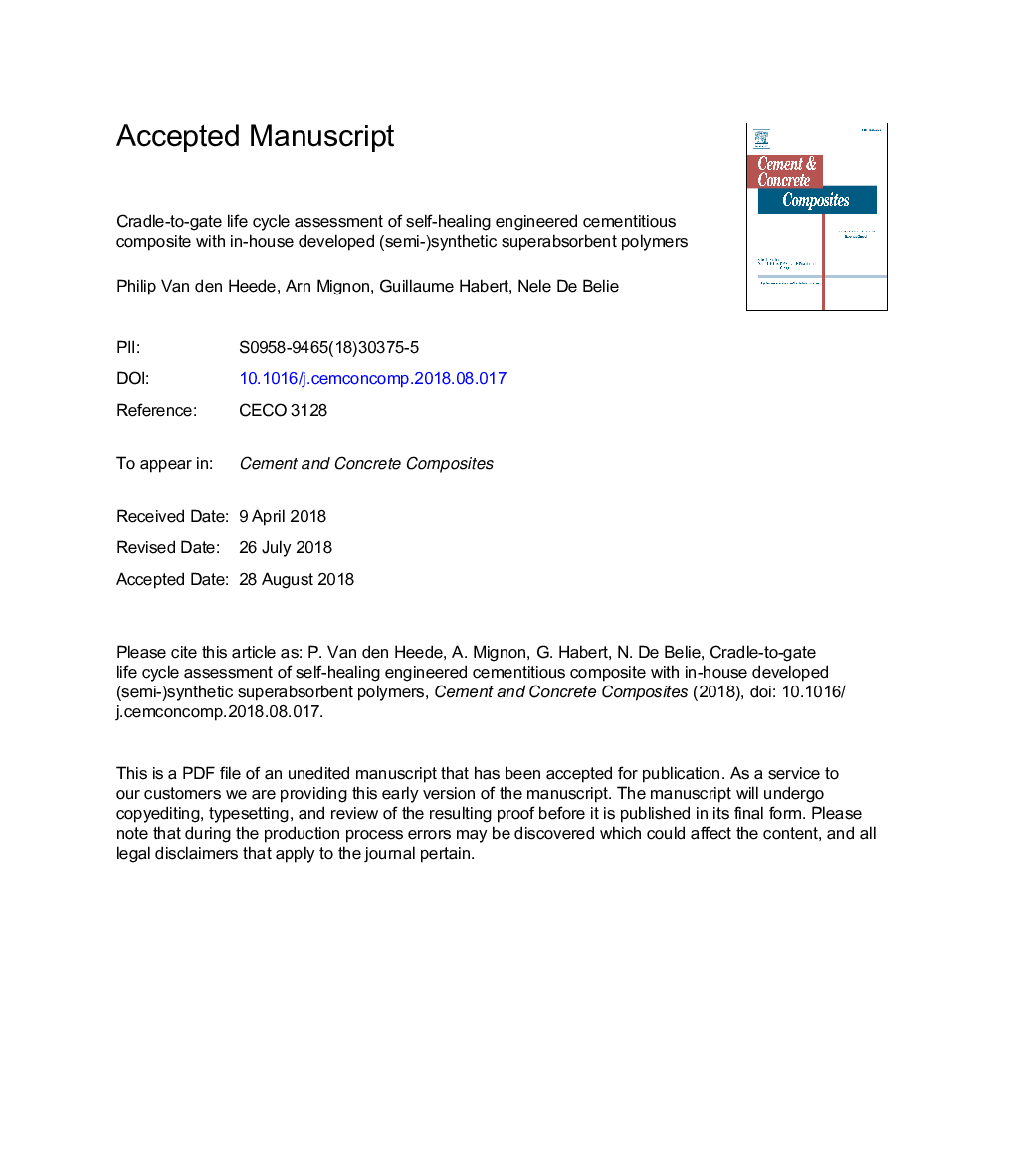| Article ID | Journal | Published Year | Pages | File Type |
|---|---|---|---|---|
| 10128343 | Cement and Concrete Composites | 2018 | 44 Pages |
Abstract
Autogenous crack healing can be stimulated with superabsorbent polymers (SAPs) in microfibre reinforced strain hardening engineered cementitious composite (ECC). Cradle-to-gate life cycle assessment was performed for self-healing ECC with 1â¯m% of three in-house developed (semi-)synthetic SAPs and 2 v% of polypropylene (PP) or polyvinyl alcohol (PVA) microfibre. Given the high cement content of this ECC (572â¯kg/m3), CML-IA impacts of 1â¯m% SAP range between 4 and 52% of the cement impact. The highest impacts were recorded for semi-synthetic SAPs, due to high energy use during drying. Use of PVA microfibre should be avoided since addition of 2 v% (= 26â¯kg/m3) can easily induce significantly higher CML-IA impacts than 572â¯kg cement. Nonetheless, if 100% crack healing efficiency could be assumed for slabs made of self-healing ECC, CML-IA impacts remain lower than those of a slab made of traditional concrete with inclusion of the required cover replacements within 100 years.
Related Topics
Physical Sciences and Engineering
Engineering
Industrial and Manufacturing Engineering
Authors
Philip Van den Heede, Arn Mignon, Guillaume Habert, Nele De Belie,
